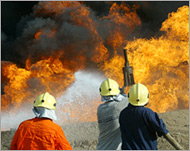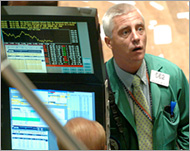Pressure mounts on US oil reserves
Oil markets have been stung once again, this time by the news of a fall in US commercial inventories last month, raising complex and difficult questions for the US and world economy.

The fall in inventories went directly against market expectations. Futures analysts were predicting rises in commercial crude oil held by American oil companies and refineries. Rises of between 1.3 and 3 million barrels.
Instead, the US government Energy Information Agency (EIA) reported a drop of 4.2 million barrels.
This took commercial reserves to their lowest since March when the US Senate voted to divert stocks intended for the government’s Strategic Petroleum Reserve (SPR) – its emergency oil stockpile – to ease prices and the prospective burden on the economy.
Falling commercial reserves
However, trade organisation American Petroleum Institute said the case was even worse, disagreeing with the figures reported by the EIA and saying the fall was almost twice as bad, at just under 8.1 million barrels.
|
“But OPEC can only really affect the price when it has ample spare capacity. But now it is down to a minimum of spare capacity. It does not have the power to control the market” Dr Muhammad-Ali Zainy, |
This prompted a reverse in the recent decline in oil prices, sending light crude up around $2 a barrel in just one session.
This increase in price, coupled with the fall in available commercial stocks, has led some to demand that the US government release some of its SPR to protect the US economy.
Notable among such voices is former Saudi Arabian oil minister Shaikh Yamani who now runs the Centre for Global Energy Studies (CGES) in London. He was quoted as saying: “They have to, unless they are not unhappy with present prices.”
Along with this, after meeting US Energy Secretary Spencer Abrahams in Paris on 24 August, International Energy Agency executive director Claude Mandil hinted that “the prospect of [the US] using [SPR] stocks is higher than it was a year ago”.
However, Shaikh Yamani’s senior energy economist and analyst at the CGES, Dr Muhammad-Ali Zainy, speaking to Aljazeera, doubted an imminent release of the SPR.
“The SPR is designed for major supply disruptions only, this drop in commercial reserves will not affect that view. Right now the market has become very tight, with very little leeway. Although a release of strategic reserve stocks will not happen, the drop in US commercial reserves does indicate that [US] consumption is more than they are importing or refining,” Zainy said.
Political considerations
What the drop in inventories and the consequent price rise also says is that the market, and especially OPEC, finds it impossible to absorb any bad news at the present time.
“It is a very complex situation with a multitude of factors,” Zainy explained. “Russia, Iraq and so on. But OPEC can only really affect the price when it has ample spare capacity in terms of production. But now it is down to a minimum of spare capacity. It does not have the power to control the market.”
 |
|
Sabotaged pipelines in Iraq have |
Political considerations also weigh heavily on the use of the SPR.
George Bush Sr released stocks during his term as president in an attempt to reduce consumer prices. Despite successfully reducing pump prices, the political fallout did not stop him from losing the next election to Bill Clinton. The current president does not even have this luxury.
Allowing SPR stocks on to the market place in March of this year did briefly pull down oil prices. But the energy dichotomy faced by President George Bush is that releasing stocks of the SPR may only increase uncertainty by exposing the US economy to greater potential price shocks in the future.
However, keeping oil barrelled up in the SPR could also exacerbate high oil prices. In fact, some analysts say stocking the SPR creates a price premium of about $5 a barrel.
Demand outstripping supply
Vice-President Dick Cheney admitted last week at an under reported town hall meeting in Davenport, Iowa: “We’ve got a situation now where prices have gone up because worldwide demand has increased, and worldwide supply hasn’t kept pace with that demand.
“But the reason we set up the Strategic Petroleum Reserve in the 1970s … is to deal with the emergency that would arise if … something were to suddenly happen to one of the major nations supplying petroleum to the United States. That would be the kind of national crisis that would … probably bring large parts of our economy to a halt.”
Frederic Lasserre, an oil analyst from Societe Generale bank in Paris, agrees that the SPR will remain untouched, for now. But he warns that future falls in inventories could worry the markets.
 |
|
A harsh winter would increase oil |
“The US energy secretary, Mr Abrahams, has said recently that the SR will not be used. If it was going to be used he gave figures such as supply disruptions over three months of somewhere around 5 million bpd. We do not have anything near that that at the moment. He also said that the SPR should not be used to disturb the market price mechanism, to simply manage the market.
“But what is worrying is that we now see that OPEC may only have spare production capacity of around 1 million bpd. This is virtually nothing in a marketplace that consumes around 83 million bpd. Even the Saudis are pumping at near maximum and this [lack of spare capacity] increases the risk of potential supply problems.”
Increased winter demand
Such risks to reserves may be exacerbated by extra demand from the US in the event of a harsh winter.
“Winter is approaching and this seasonal change generally means a rise in demand,” said Zainy. “This means the fourth quarter of 2004 and the first quarter of 2005, especially if there is a very cold winter. The possibility of an increase in US demand in the next six months really does depend on the weather.”
Lasserre said, however, the underlying problem, acknowledged across the markets, is the absence of any extra production capacity.
“The market was expecting that OPEC and Saudi promises of increased production from July would have made it through into the US market by now, that is why they were expecting increases in inventories.
“Those increases in production take around 45 days to come through and so it is possible that we have yet to see them. But if there is no increase in the next month’s reserve figures, well, then I think the market will be very disappointed.”